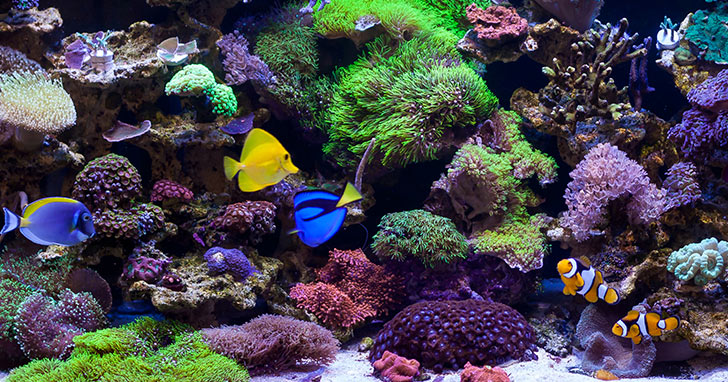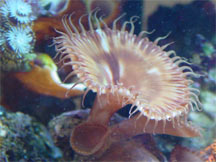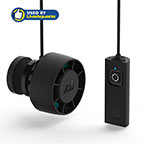By Michael Paletta

A crucial - and often overlooked - aspect of keeping a reef aquarium is water movement. Proper water movement goes a long way toward helping a reef system thrive.

The importance of water movement
In nature, corals and other reef inhabitants are accustomed to rapid, constant water movement, and have evolved physiologically to benefit from it. Water movement is important for several reasons:
- Growth - Water currents bring corals, clams, and sessile invertebrates the food, oxygen, nutrients, and movement necessary to stimulate growth.
- Waste Removal - Currents "clean" corals by carrying away waste products and sediment that promote damaging algae growth.
- Fish Health - Strong current demands increased movement among fish, and helps them burn off excess fat found in many commercial fish foods.

How to achieve proper water movement
To best simulate natural water movement in your reef aquarium, you must first understand the three main types of water movement. 1) Laminar flow is characterized by a steady, unidirectional flow, and is most often produced by powerheads. 2) Surge is similar to laminar flow, only stronger, for a shorter duration, and followed by a weaker reverse flow. Surge is best illustrated by the sudden movement of an entire school of fish in a single direction, followed by their sudden return to the initial location once the surge has passed. 3) Turbulence is the random flow of water in multiple directions. Of the three types, turbulence is the most desirable and the most difficult to replicate.
You can create water movement in your reef aquarium using several means:
Powerheads, while relatively inexpensive, produce only laminar currents. If you choose to implement a powerhead, do not aim water flow directly at invertebrates - the flow may be too intense and organisms may suffer damage. You can, however, direct flow to a specific area to reduce detritus buildup. Depending on your aquarium setup, you can create multi-directional flow with a powerhead by adding PVC pipe and fittings to the outflow.
Oscillating powerheads rotate within the aquarium and direct water over a wider area. By implementing several of these devices, you can create a turbulence pattern similar to that found on a reef.
Electronic wavemakers may be used with multiple standard or oscillating powerheads to produce turbulence by shutting the powerheads off and on in random fashion.
Water flow diverters, installed on the return of your main filtration, contain a pressure activated switching valve that acts as an alternating tee, splitting your return line into two separate outputs to create beneficial currents. If your aquarium is large, you can use more than one valve after the tee to create several currents.
Important water flow considerations
Regardless of how you choose to create water movement in your aquarium, prevent salt spray by minimizing bubbling and surface agitation. While salt spray may not initially be problematic, a fine coating of salt will eventually reduce the intensity of the lights and creep into everything around the tank, seriously damaging electrical fixtures/appliances.
While good water movement is critical for the health of your reef aquarium, too much water movement can be unhealthy. If current is too strong in a particular area, corals will grow around that spot. While inhabitants generally adapt to water movement patterns, you must pay close attention to the growth and development of your reef system, and adjust water flow to levels under which inhabitants thrive. With proper planning and equipment, you can easily create healthy water motion within your aquarium.
Biography:
Michael Paletta is the author of two books, "The Modern Marine Aquarium" and "Ultimate Reefs," and has acted as a consultant with the National Aquarium in Baltimore and the Pittsburgh Zoo Aquarium.
|